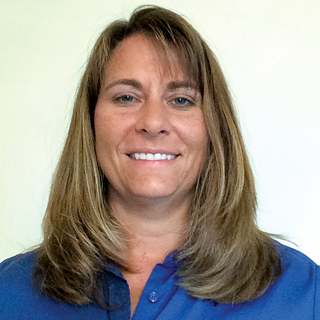
Wounds, whether resulting from falls, pressure ulcers, or other causes, represent one of the most litigated care issues in long-term care facilities. Additionally, wound care presents complex coding and documentation issues, which can directly impact reimbursement for services provided.
When providers implement a wound care management solution that includes preventative measures, risk assessment, and technology to document care and the healing process over time, it not only benefits residents and their families, but also helps to reduce risk and maintain consistent records.
To help long-term care facilities improve wound care quality through consistent documentation and overall trend analytics, PointClickCare launched its Skin and Wound™ mobile app.
Documenting wound care consistently can be difficult, unless there’s a dedicated nurse for measuring wounds the same way each time, at regular intervals. Most care providers don’t have this resource available to them, instead they have different charge nurses week by week, which often causes variations in wound tracking and measurement. PointClickCare’s mobile app not only provides a better workflow and method to easily track wounds, it also offers a new way to measure and assess wounds consistently, while helping to increase collaboration with not only care team members, but with the resident and their family as well.
Why documenting wound care in an EHR matters
Today, organizations manage wounds in multiple ways. Some handle wound assessments within an electronic health record, some use paper, and some track within a Microsoft Excel workbook. We want to streamline the process in an effort to help improve wound care.
The mobile app solves a workflow problem that complicates wound care – the non-standardized documentation and assessment of wound progression over time. The tool helps make progress measurement consistent between staff from week to week, as well standardizes the terminology used to describe the patient’s progress.
Using the PointClickCare Skin and Wound app, staff can calculate the area of a wound, which is typically a challenging manual task. The app helps nurses to identify wound status quickly because they can assess size and change of area more precisely. With trending graphs and easy photo overlays, nurses can easily identify improvement or degradation of wounds.
Descriptive data points such as slough, granulation, eschar, notes of infection, and other wound characteristics can also be tracked as part of the standardized assessment.
Once end users document that progress, they are able to discuss treatment with the care team a lot sooner, which ultimately leads to improved overall wound care across the organization. The app offers more than a method for measuring wounds; it offers a way for organizations to standardize wound assessment and how photos are taken.
With data entered over time, analytics can identify trends. If a wound is assessed multiple times, the data is aggregated in the app to allow for comparisons to determine percentage of wound closure. Even if the assessment is completed on the mobile device, it gets pushed and populated in the EHR.
Moving to electronic wound documentation
Having digital wound care documentation technology helps improve patient care, save time and reduce the chances of litigation. When considering a wound care solution, the following aspects should be considered:
-
The software should do more than just track wound data. Look at what assessments are offered as part of that solution.
-
The solution should be based on long-term care best practice guidelines, as well as include a standard risk assessment such as the Braden Scale.
-
The software should improve what they have today, taking their wound care abilities to the next level.
-
The solution should save time in reporting. Organizations spend a lot of time reporting, line listing, tracking and rolling up data for analysis and quality improvement plans. This should be automated as much as possible.
-
It should keep up with the language of wound care. For example, the Centers for Medicare and Medicaid Services (CMS) will scrub the term “pressure ulcer” from its Long-Term Care Minimum Data Set (MDS) in the coming years. Wound documentation software needs to help caregivers document wound care using current standard terminology.
-
Moreover, a wound care app should support photos – making them clear, consistent and accessible to all the nurses involved in a resident’s care. While some organizations already take pictures in ad-hoc workflows, the right app will provide comparisons that yield actionable treatment data.
Most people today have mobile devices. Families take photos of wounds and share with physicians and other caregivers. Wound apps offer caregivers a consistent way to capture photos, securely store them in the EHR, and ensure wound care compliance. This process engages residents and gives their families a way to demonstrate progress when it comes to how their loved ones’ wounds are healing.



